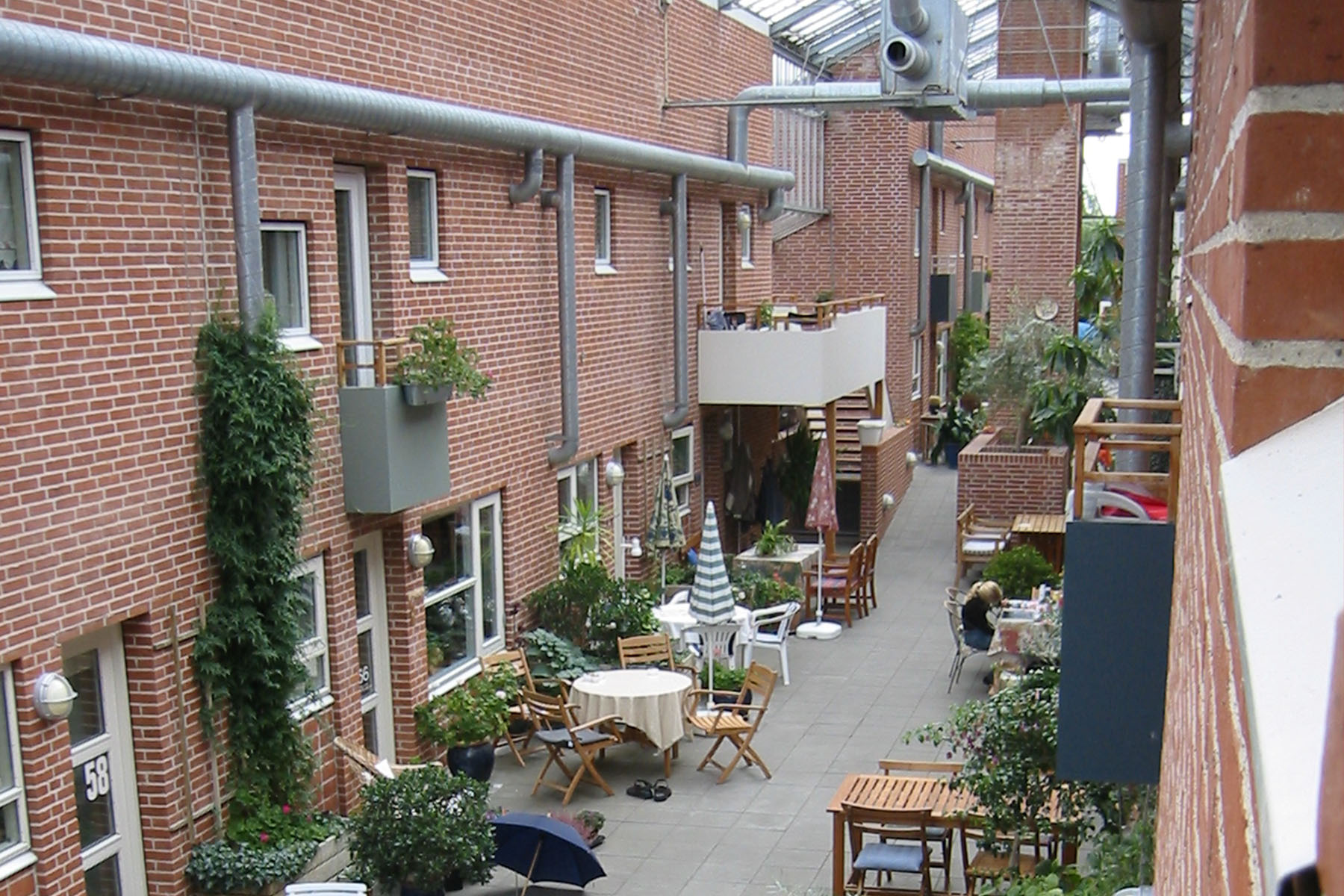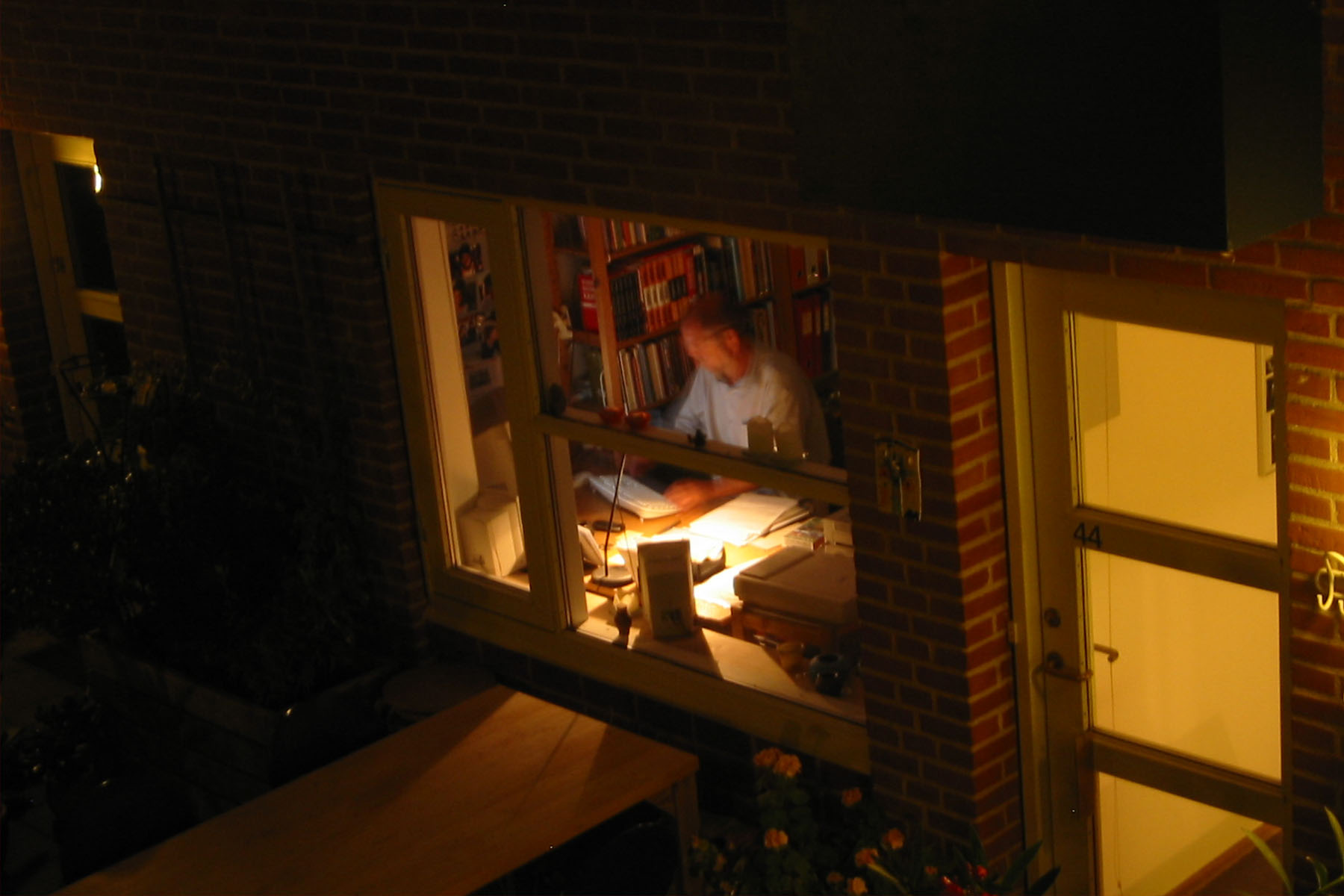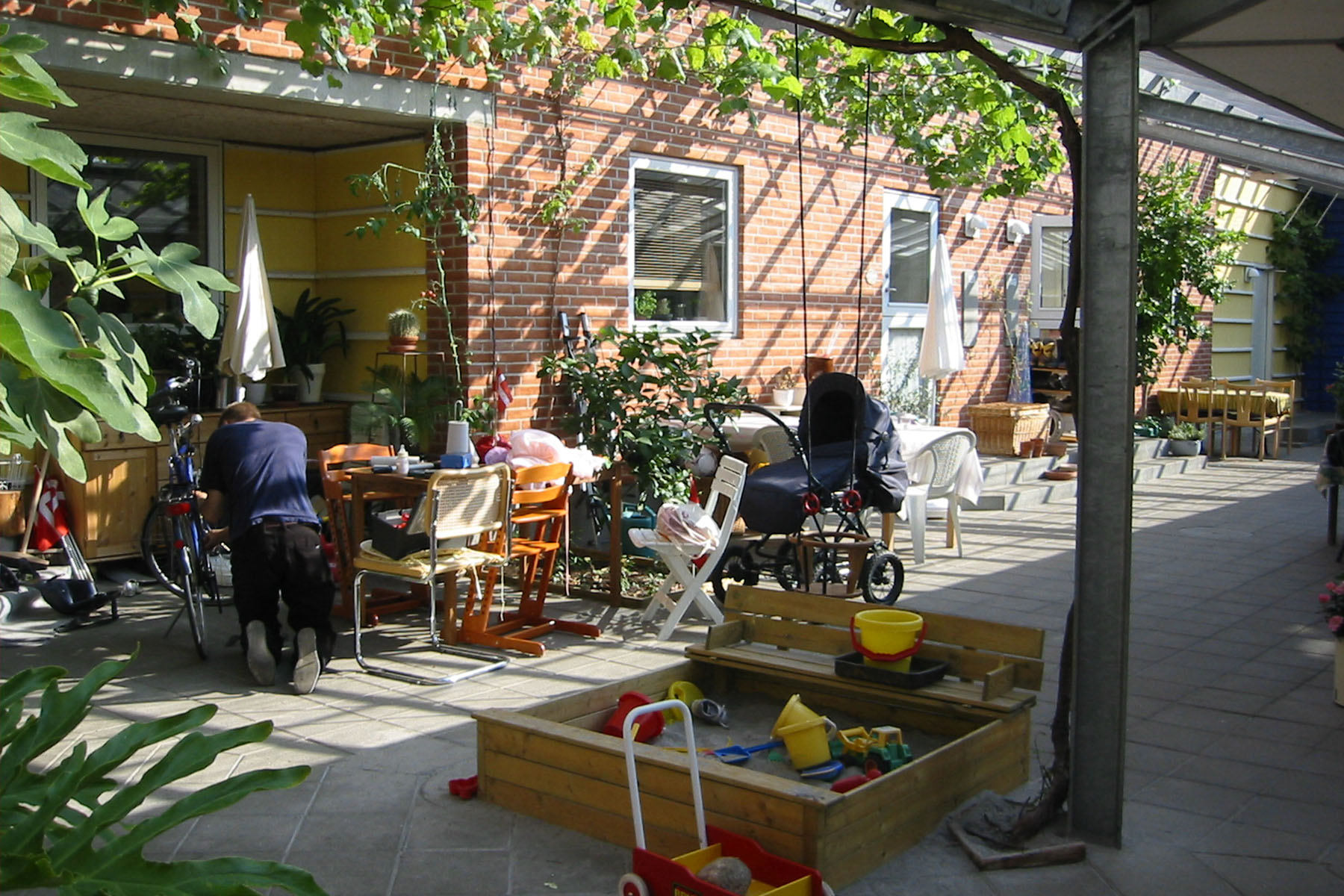The linking of cohousing units with public passageways creates dynamic opportunities for interaction during an average day.
The Community Street acts an an outdoor room that provided the opportunity to socialize or just be in the presence of others while still maintaining a degree of privacy. While this is not a room in the Common House, the communities with a covered street exemplified that this pattern played a key role in the communitas of a community. The presence of the community is not only evident in the physical presence of its residents but the artifacts of human occupation - furniture, toys, lights. These daily household items spill over into the community street giving it life.




Please Note:
This series of blog posts is focused on explaining common design patterns in cohousing. Grace Kim, a founding principal and owner of Schemata Workshop, has identified patterns applicable to cohousing from "Pattern Language" by Christopher Alexander and has added some of her own.
Grace's additional patterns pay particular attention to the Common House because its design requires special consideration. As the living room for the community, the Common House sets the initial impression for visitors about what cohousing is, what your community values might be, or the perceived benefits of living in community. Schemata Workshop has analyzed scores of common houses in Denmark and North America to discern what does and does not work. Following Alexander's concept of Pattern Language, Grace has thoroughly documented the necessary programmatic and design elements for a successful Common House.
To learn more about cohousing at Schemata, visit our cohousing page.

